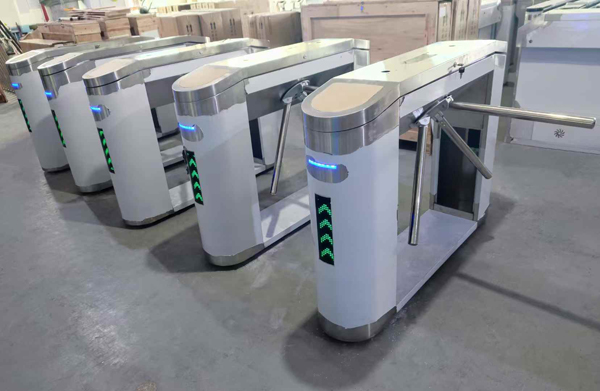0086-13924498389 info@qiruisafe.com
When using tripod turnstiles, it's important to follow safety and operational guidelines to ensure smooth functionality and prevent accidents. Here are key cautions to consider:

1. Installation & Placement
- Ensure the turnstile is installed on a level, stable surface to prevent wobbling or misalignment.
- Avoid placing it in wet or slippery areas unless it’s specifically designed for outdoor/waterproof use.
- Maintain sufficient clearance space (at least 1 meter) around the turnstile to avoid crowding.
2. User Safety
- Do not force the tripod arms—users should push gently to avoid mechanical damage.
- Children and elderly may need assistance—ensure supervision if required.
- Avoid jumping over or crawling under the turnstile to prevent injuries.
3. Maintenance & Durability
- Regularly lubricate moving parts (hinges, rotating arms) to ensure smooth operation.
- Check for loose screws or damaged components periodically.
- Clean the turnstile with a damp cloth (avoid harsh chemicals that may corrode surfaces).
4. Electrical & Access Control (If Applicable)
- If integrated with card readers or biometric systems, ensure proper wiring and waterproofing.
- Protect against power surges if the turnstile is electronically controlled.
- Test emergency unlock features (e.g., fire safety release) regularly.
5. Crowd Management
- Use signage (e.g., "One Person at a Time") to prevent tailgating.
- In high-traffic areas, consider additional security personnel for supervision.
- Avoid using tripod turnstiles in emergency exits unless they have a quick-release mechanism.
6. Compliance & Regulations
- Ensure the turnstile meets local safety standards (e.g., ADA compliance if needed for accessibility).
- If used in workplaces or public venues, follow OSHA or relevant safety guidelines.
By following these precautions, you can enhance safety, longevity, and efficiency of your tripod turnstile system.